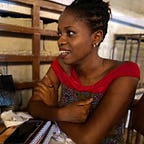The Prosperity Paradox: summaries and lessons.
About 90 million Nigerians live in extreme poverty according to the report published by World Bank in 2018. In that same year, World Poverty Clock reported that Nigeria replaced India, a country bigger than her, at the top of poverty ranking and we became the poverty capital of the world.
This report got so many reactions including comments from critics who disagree with this report. At a first glance, it is understandable to disagree with this report. We (Nigerians) are somewhat proud people. And maybe it is extreme to call us the poverty capital of the world.
But whether poverty capital or not, about 83 million Nigerians live below 137,430 Naira ($381.75 per year) according to the World Bank publication in 2019.
Poverty Defined
There have been different definitions of poverty. According to World Poverty Clock, countries who live below the $1.90 poverty line are considered to be poor. However, the United Nations Development Program (UNDP) argues that grouping poverty levels into ‘rich and poor’ results in an oversimplification of the real picture of poverty.
Hence the concept ‘Multidimensional Poverty Index’ (MPI). MPI does not only define poverty in terms of income but also explores poverty in terms of health, education, and standards of living. According to this index, a larger proportion of Nigerians (51%) are multidimensionally poor.
The gory events that followed the #EndSARS protest have revealed the massive gap between the rich and the poor. The same Nigeria that produced the richest man in Africa also has large numbers of poor people.
For the purpose of this article, we will define Poverty indicators in terms of low-quality education, sub-par healthcare, non-existent infrastructure, and bad governance.
PROSPERITY
On the flip side, we will define prosperity as the process by which more people in a region improve their social, economic, and political well-being. You know a country is prosperous not because they have so many natural resources but because they have attained some levels of freedom and transparency in their systems.
One point to note is that Prosperity is not positively correlated with natural resources as Nigerians like to think. South Korea, for example, lacks significant natural resources. In fact, it was one of the poorest countries half a century ago but today, 15 of the world’s largest companies originated from South Korea. Among them are popular names like Samsung Electronics and Hyundai motors etc. Between 1970 and 2016, South Koreas’ GNI per capita had experienced a ten-fold increase.
The point is you can have so many natural resources and still be poor as we have seen with the Nigerian case study.
NGOs and Foreign aids are not working
In a bid to ‘rescue’ developing countries such as Nigeria from poverty, ‘’richer or more prosperous’ countries offer aids.
But despite the increase in the number of foreign aids given to poor countries, there has not been any remarkable increase in development. This century alone, the United States has spent more than 30 billion dollars on the development of low-income countries.
$11 million out of the $89 million given by the U.S Agency for International Development In 2018 was to be used for education in Nigeria but I really doubt that we have seen any significant improvement in our education since 2018. For a better context, the Academic Staff Union of Universities (ASUU) has been on strike since February 2020.
Apart from foreign aids, many local NGOs have set up poverty alleviation programs that never took poverty away. Most of these interventions or initiatives never really made a difference for the target population. We have reports of abandoned projects all over the country.
In Efosa Ojomo’s prosperity paradox, Efosa narrated how in a bid to combat lack of water established an NGO that built wells in local communities. But after six months of constructing the well, it turned out that one of the wells broke down. Getting a skilled technician to fix the well was a challenge and after that was solved, another problem came up. After spending about $300,000 on building wells, only one of the wells was said to be functional as at the time they authored the book.
This is the story of major interventions around the country. The one bag of rice that was distributed would most likely finish in one month and people will fall back into hunger again.
While your good wishes and donations expressed through NGOs and other foreign aids have their good benefits, they are not enough to lift the nation out of poverty.
And this is why President Buhari’s Tradermoni, Marketmoni, and other similar initiatives will not exactly make a difference in lifting Nigerians out of poverty. Trader Moni is an initiative by the government that gives you a loan of 10,000 Naira ($26.23) to ‘boost’ your business which you are expected to return within six months. With the current rates of inflation and the increasing cost of living, this money can do little or nothing to help people’s finance.
How then can Nations be lifted out of poverty and what lessons can Nigeria learn from this?
Continued in the next post
